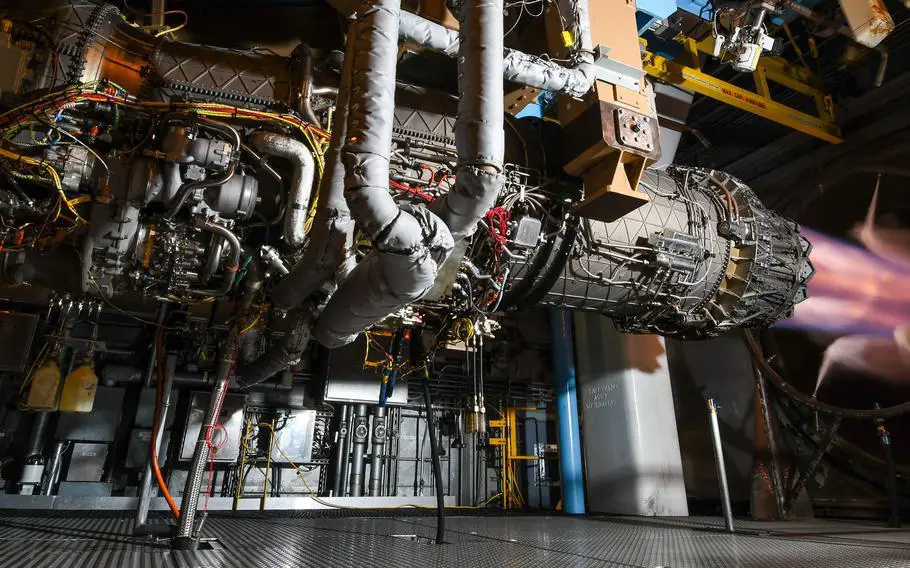The Pentagon has temporarily called off engine deliveries for the F-35 Lightning II fighter jet after a crash last month at a military base in Texas. The F-35 Joint Program Office said an agreement was reached between defense officials and Pratt & Whitney, the maker of the engines, to suspend the deliveries pending the outcome of the crash investigation. An Air Force pilot was testing an F-35B for the Marine Corps at Naval Air Station Joint Reserve Base Fort Worth on Dec. 15 when the jet, which can take off and land vertically, encountered trouble while hovering above a runway. The pilot slowly began to lose control and ejected safely after the plane sank toward the ground and bounced off the runway. Naval Air Systems Command, or NAVAIR, is investigating but has not yet given an indication of what caused the crash.
The F-35 uses only one engine in flight, the turbofan Pratt & Whitney F135. The F-35B uses the engine’s 600 model, which has a thrust vectoring nozzle that allows the flow of energy to be directed downward so the plane can hover and take off and land vertically. While the jet is hovering over the ground, the engine can produce more than 40,000 pounds of thrust. The JPO said the suspension affects new deliveries of all variants of Pratt & Whitney’s F135 engine. Lockheed Martin’s F-35 entered service in 2015. The Marines fly the B variant, the one involved in the Texas crash, while the Air Force operates the A variant and the Navy uses the C variant. The F-35 is the only U.S. military aircraft that uses the Pratt & Whitney F135 engine.














